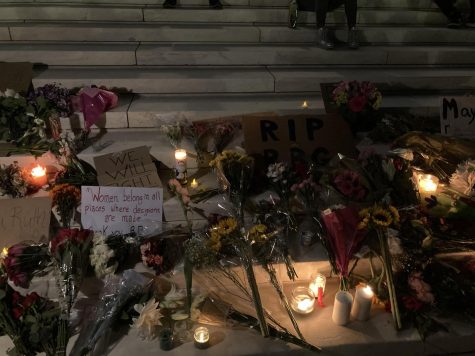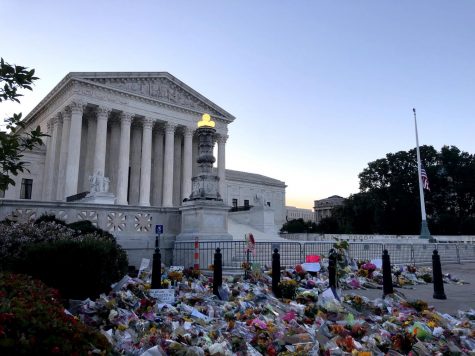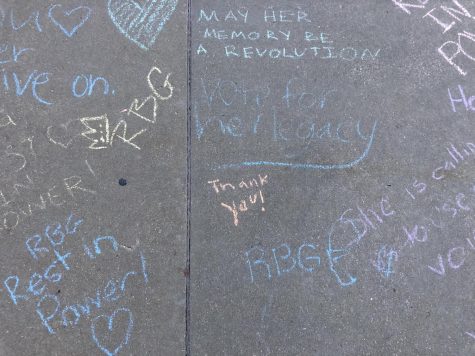Mason students pay tribute to Ruth Bader Ginsburg
September 22, 2020

Ruth Bader Ginsburg was many things– the second woman to sit on the Supreme Court, an icon within the feminist movement, and a fixture in pop culture.
To some Mason students, Justice Ginsburg was an inspiration. After the announcement of her death on Friday, September 18, honoring her memory in front of the Supreme Court for them was a must.
“On the night of RBG’s death, we decided to go to the Supreme Court to pay our respects. We didn’t expect so many people there, but at 11 p.m., the steps of the court were covered in flowers, candles, cards, and posters,” senior Ashley Zigler said.
“Walking up to the steps was a very emotional experience for me, I’m not gonna lie, I began tearing up quite a bit, processing everything,” she said. “Candles were left everywhere along with matches, and I was lucky enough to be able to light a candle in her honor. I cannot describe how much it meant to thank her for everything she has done and to honor her life.”

Senior Alexis Holewinski also visited the court after hearing about Justice Ginsburg’s death. “What struck me the most was the unexpectedness of her death, and I think that the crowd at the court Friday night projected that feeling. There were certainly candles, flowers, and posters, but it seemed that the majority of people had been drawn there out of the impulse that it was simply important to be there, even if we weren’t mentally prepared for it to be our very final respects,” she said.
“On Friday, we could climb [the steps of the courthouse], so we got the opportunity to take a minute to pause in RBG’s space as we looked down at everyone else who came to honor her,” Holewinski added.

A graduate of Cornell University and Columbia Law, Ginsburg made waves arguing gender discrimination cases with the American Civil Liberties Union– she won six in front of the Supreme Court. She was appointed to the US Court of Appeals during the Carter administration in 1980, and in 1993, she was nominated to the US Supreme Court by President Bill Clinton.
Throughout her time on the Supreme Court, she wrote the majority opinion on multiple landmark cases regarding women’s rights and civil liberties. Recognized for her anti-originalist views and her many dissenting opinions, she was deemed by the public to be the “Notorious RBG.”
Justice Ginsburg’s activism, her career on the Supreme Court, and her voice and recognition in pop culture was meaningful to many. “RBG has always been a symbol of resilience for me. She taught me to always fight back and stand up for what is right,” Zigler said.
Mason students can still visit the memorial in front of the Supreme Court, where there are candles, artwork, chalk messages, and many letters from people who have been affected by her work as a lawyer and by her decisions on the Supreme Court.









